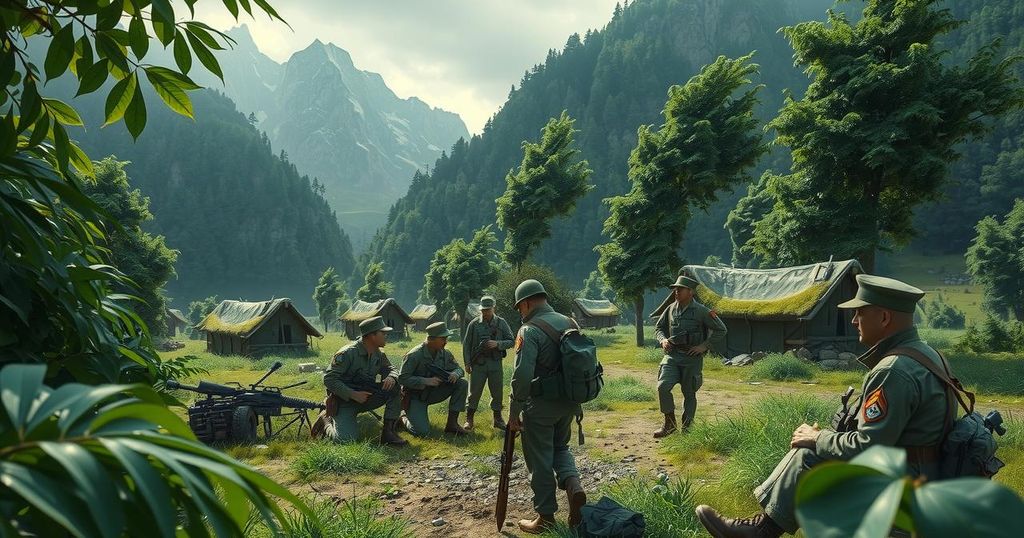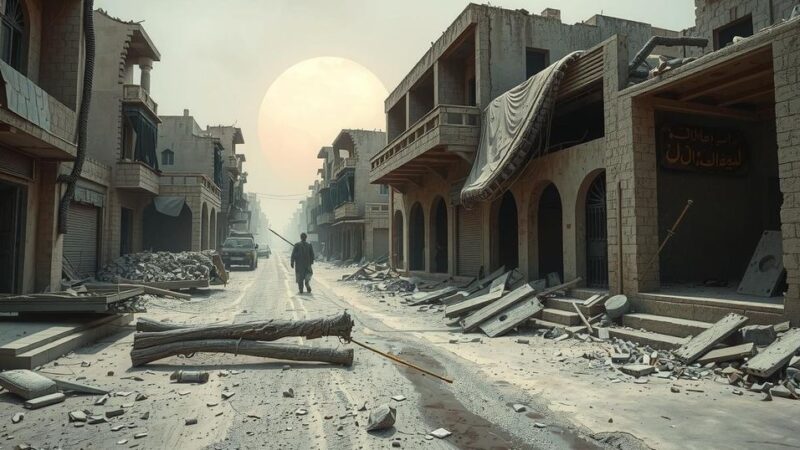The M23 rebel movement has captured key cities in the DRC, exposing significant weaknesses in the Congolese Armed Forces (FARDC), which has more personnel yet struggles with systemic corruption, inadequate training, and outdated equipment. Despite increased military spending, issues of cronyism and historical legacies of division continue to hinder the army’s effectiveness against M23. The DRC’s efforts to reform its military face numerous challenges, exacerbated by external influences from Rwanda.
Since early 2023, the M23 rebel movement has successfully captured significant cities, Goma and Bukavu, in the Democratic Republic of Congo (DRC). In contrast to the Congolese Armed Forces (FARDC), which boasted approximately 135,000 personnel in 2022, the M23 reportedly fields only a few thousand fighters, supported by around 4,000 Rwandan soldiers. This creates a remarkable disparity in military capabilities.
Despite President Felix Tshisekedi’s substantial increase in military expenditure to $794 million in 2023, questions arise regarding the FARDC’s inability to repulse the M23. Inefficiency and systemic corruption are prevalent within the FARDC, as noted by Alain De Neve of the Royal Higher Institute for Defense. Reports indicate significant mismanagement of funds meant for soldier salaries and military logistics, leading to low morale and frequent desertions.
Alain De Neve articulated that the prevailing problems include corruption, with military leaders enriching themselves amid a crumbling structure. Ciaran Wrons-Passmann remarked on the FARDC’s transformation into a self-serving entity, further complicating military operations. Furthermore, discrepancies in reported troop numbers have emerged, allowing military officers to misappropriate funds from Kinshasa, as highlighted by Jakob Kerstan.
Research indicates that the FARDC grapples with inadequate training and outdated equipment. While Tshisekedi proclaimed enhancements in pay, soldiers are still undercompensated in comparison to foreign mercenaries. Jones De Neve emphasized the FARDC’s lack of modern technological resources, which hampers efficient operational coordination.
Additionally, pervasive cronyism in military appointments undermines effectiveness, as officers are often favored for loyalty rather than competence. Wrons-Passmann pointed to a revolving door of leadership, revealing the DRC’s struggle to cultivate capable military personnel. The integration of former warlords into the army has led to complex, loyalty-based command structures within the FARDC.
Historically, the DRC army has been undermined by leaders like Mobutu Sese Seko, who intentionally weakened military strength to prevent potential coups. This legacy of division remains evident, affecting government trust in military unity against groups like M23. As noted by both Kerstan and Muyaya, the DRC’s reluctance to negotiate with M23 stems from fears of infiltration, a concern rooted in the army’s historical vulnerabilities.
The Democratic Republic of Congo’s military challenges are intricately linked to systemic corruption, inadequate training, and outdated resources, compounded by historical legacies and cronyism. The M23’s resilience against a larger military force highlights critical weaknesses in the FARDC, including poor leadership structure and the impacts of external support from Rwanda. Effective reform of the DRC armed forces remains an ongoing process fraught with difficulties and uncertainties.
Original Source: www.dw.com






